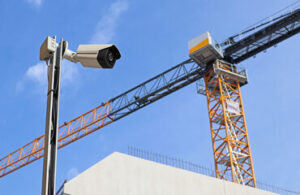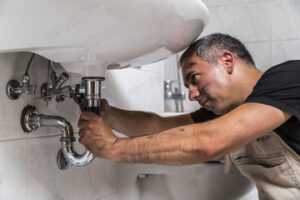Many items that are affected by mold can be reclaimed if they are cleaned. Items that have sustained water damage are best thrown away. This includes porous materials like drywall and carpeting. Mold spores can easily get into hidden spaces, so they may not be entirely removed by cleaning alone.

Before a home is cleaned of mold, it is important for professionals to set up containment and ventilation. This will keep spores from spreading to other parts of the home while the remediation takes place. It will also ensure that the workers are not breathing in spores while cleaning. Speak with Mold Removal In Brooklyn for quality solutions.
All belongings that came into contact with mold will be treated and sanitized before they can be placed back into the home. This will prevent spores from being brought into other areas of the home and causing additional contamination. This includes things like pillows, clothes, furniture and curtains. These items can be sanitized with detergent solutions or by being placed in a dehumidifier. In some cases, these items may need to be thrown away entirely.
Next, all non-porous surfaces like tile, metal and wood will be scrubbed with a mold-killing disinfectant. This will include scrubbing the surface of the walls, ceiling and floors. This will remove any visible mold, as well as spores that are not easily seen. Then, the area will be thoroughly dried. Moisture is what causes mold to grow, so removing all moisture will help prevent future mold growth.
Porous materials such as drywall, carpeting and insulation will need to be removed and replaced. This can be a costly process, but it is necessary for a safe and healthy home. After all of the repairs are completed, a final inspection and air quality testing will be performed. Once the environmental testing company has given clearance, homeowners can return to their homes.
Taking steps to prepare for professional mold removal can make the process smoother and less stressful for everyone involved. Mold growth is not something that should be ignored, and if left untreated it can lead to severe health issues for your family. It is important to address it quickly by hiring a qualified mold removal company. Mold removal can be an overwhelming task, but it is important to do it correctly to prevent future mold problems. Using the tips above will help you feel confident in your choice to hire a mold removal company.
Cleaning
Once the mold source is addressed, the next step in mold removal is to clean and disinfect the area. This includes cleaning up the visible mold, but it also includes a thorough cleaning of all the organic materials that have been contaminated by the fungus. Mold spores can easily become airborne, which is why it is important to wear protective clothing and respirators during this stage of the process. It is recommended that only a certified mold professional should perform this step, as the presence of some types of mold may be harmful to your health, especially if you suffer from respiratory conditions such as asthma.
Molds produce irritants and allergens that can cause reactions in people, including allergies, runny nose, sneezing, eye irritation, and rashes. In extreme cases, some species of molds, such as the dark green to black Stachybotrys mold, can be toxic and even fatal if inhaled. This type of mold thrives in moist places like damp basements and can cause long-term structural damage to your home.
Before beginning the cleaning phase, it is important to document the extent of the mold infestation. This will allow the restoration company to determine the proper course of action for removing and cleaning the infected areas. It will also help to manage liability and provide documentation that the company has taken all appropriate steps to limit contamination.
One of the first things a remediation specialist will do is erect containment around the affected areas to prevent the spread of mold spores to unaffected areas. This can include covering windows with plywood or cardboard, taping and wrapping mold-infested fabrics, and double-bagging garbage bags for disposal. It is also advisable to wear N-95 masks, gloves, and goggles during this process. A fan or dehumidifier will be used to control humidity levels and speed the drying of water-damaged materials.
Non-porous surfaces such as walls, floors, ceilings, and metals can be cleaned with bleach and water or a diluted solution of commercial mold cleaner. Porous materials such as drywall, insulation, carpet, and wood should be discarded and replaced with new material. Items that are heavily infested with mold should be placed in double 6mm plastic bags and then placed into a dumpster for disposal.
Containment
Mold produces spores that can be inhaled and cause health issues, especially for those with pre-existing conditions like asthma or compromised immune systems. To prevent spores from spreading to other areas during the cleanup process, experts use containment methods. These may include plastic sheeting and specialized equipment. An industrial hygienist and possibly the contractor will determine the best containment method for a particular job site.
For Level 1 remediation, a small area with an active growth of black mold is isolated from other areas using 6mm polyethylene sheets affixed to the floor and ceiling for small jobs or attached to a frame for larger projects. The polyethylene creates a negative pressure environment, drawing the spores against surfaces and keeping them from dispersing into the air. Entryways to and from the containment area are covered with duct tape, so that no spores can escape during the cleaning process. Workers wear personal protective equipment (PPE) such as a respirator, goggles, face mask with particle filter, rubber gloves, coveralls and boots.
The next step is to apply a biocide to the affected area, killing the mold spores and making them sterile. This can be done by spraying a commercial product or a home-made solution such as a mixture of white vinegar and water with baking soda. The surface to be treated must be cleaned first, and this can be done with a scrub brush or damp sponge for non-porous materials. A brush and vacuum cleaner can be used on porous items such as drywall and insulation.
Once the area is contained, dehumidifiers and fans are set up to dry the contaminated surfaces. This is important because the presence of moisture promotes future mold growth. If a mold spore is airborne, it will be carried by the HVAC system throughout the house and can cause other areas to become infested. Drying the impacted spaces will also prevent the mold from releasing mycotoxins, which are toxic compounds produced by certain types of fungi that can lead to a variety of infections including histoplasmosis, cryptococcosis and aspergillosis. Once the area is fully dried, a fresh coat of latex paint with an anti-microbial additive can be applied to the walls and other surfaces.
Restoration
Mold spores are everywhere and anything in a house or building can be contaminated by them. Some species create microscopic toxins called mycotoxins, which also stick to surfaces and can be even more difficult to remove than spores.
Before anything can be done to the visible mold, it’s important to make sure the entire area is clean. This means closing off all windows and doors to isolate the affected room. Depending on the severity of the mold, this can be a very involved process. For example, if the mold is behind drywall or in ductwork, these materials must be removed and then replaced with new material.
Moisture is another big factor when it comes to mold growth. So to prepare the area for cleaning, professionals will close all the windows and doors and may put plastic sheeting up around them. They’ll also use fans and dehumidifiers to help remove any remaining moisture.
Once the area is contained, professionals will use commercial-grade antimicrobial sprays to kill as many mold spores as possible. This is done on non-porous surfaces like countertops, metals, and tiles and on porous items that can’t be removed, such as wooden wall studs. Then the professional will sanitize the surfaces by misting them with a special cleaner.
This step is extremely important, because if there are any leftover mold spores, they will continue to grow and spread. The last thing you want is to have a major mold problem return after you’ve spent the time and money removing and cleaning it. So be sure to fix the cause of the moisture, whether it’s a water leak or high humidity levels.
Once all the surface mold is cleaned, it’s time to bring back your belongings. But this is a crucial step, because any items that came into contact with mold need to be cleaned or thrown away. So before they go back in, these belongings are taken offsite by a restoration company for cleaning and sanitization.








